Invest: Miami speaks to David P. Samson, President
In 2015, the Miami Marlins saw its attendance, revenue and per capita spending grow—even our television and radio ratings 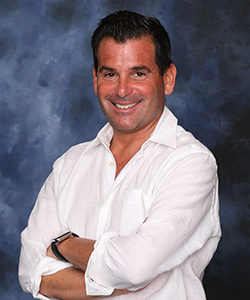 were up. While we had a setback last year when it came to on-the-field performance, we are back on the hope train for 2016 and looking forward to what it will bring as our plan is to bring another World Series Championship to Miami. Part of the success of the team hinges on having and maintaining an effective presence on social media. This is why we have an entire department devoted to marketing initiatives and the digital promotion of our team and baseball as a sport. The goal is very simple: to go viral. This is a challenge as it means having to make ourselves different from others in the digital marketplace, where our users’ desire for information about the Marlins can be fulfilled in myriad ways.
were up. While we had a setback last year when it came to on-the-field performance, we are back on the hope train for 2016 and looking forward to what it will bring as our plan is to bring another World Series Championship to Miami. Part of the success of the team hinges on having and maintaining an effective presence on social media. This is why we have an entire department devoted to marketing initiatives and the digital promotion of our team and baseball as a sport. The goal is very simple: to go viral. This is a challenge as it means having to make ourselves different from others in the digital marketplace, where our users’ desire for information about the Marlins can be fulfilled in myriad ways.
A further challenge is that the average baseball consumer is aging, while the number one growth demographic for sports and media in the world is the 18-to-34 age group. To capture this segment’s attention, we connect with fans on social media during and between games. We are looking for ways we can provide access to our players, our staff and our organization as a way to give users a unique online experience. These efforts seemed to have paid off and we turned the corner this year: our average fan age stayed the same and didn’t get older by even a year, so we have stemmed a 20- year tide.
You cannot have a great city without great sports teams, along with museums, public space, public parks and public transportation. Miami has always been a gateway city in terms of transportation and population, but we are becoming a gateway from an intellectual standpoint, as well. I am confident that, in my lifetime, Miami will become the greatest city in the Americas. But we can’t underestimate the importance of public transportation, public infrastructure and public park space—all of those things are required in order to achieve great city status and maintain it in the long term.
Invest: Miami speaks to Eric Woolworth, President of Business Operations
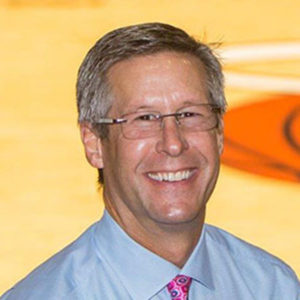 At the start of the 2014-2015 season, we had a bit of uncertainty coming off of LeBron James going back to Cleveland. Later we encountered injuries and other setbacks, resulting in a rather disappointing season; last year was only the fourth time in 20 years that we did not make the playoffs. These experiences put us into soul-searching mode.
At the start of the 2014-2015 season, we had a bit of uncertainty coming off of LeBron James going back to Cleveland. Later we encountered injuries and other setbacks, resulting in a rather disappointing season; last year was only the fourth time in 20 years that we did not make the playoffs. These experiences put us into soul-searching mode.
For some time, we have felt that we were on the right track in terms of building long-term loyalty and establishing commitment from the fan base in Miami, but until you get tested, you don’t really know. Last season was a real test, and we were gratified by the response we got. Despite our struggles on the court, we sold out every single game. We were fourth in the NBA in television ratings. Our social media base continues to be the second-largest in all of professional sports—just behind the Los Angeles Lakers—and our corporate support is stronger than ever.
In October 2015, we launched a new mobile platform that provides fans with a continuous stream of customized content and allows for users to control nearly all aspects of ticketing and purchasing through their mobile device. While having a high-profile, championship-winning team is the foundation of building a strong fan base, maintaining engagement is linked to our efforts to raise the bar on providing new, interesting, creative content—whether that is giving player or game stats, showcasing players be- hind-the-scenes or providing inside looks at players’ lives. Exceptional content keeps folks coming back.
When we set out to grow our social media presence, it wasn’t necessarily with the global audience in mind. Today the Miami HEAT is very much an international brand. Of the nearly 22 million Facebook followers we have, over 50 percent are not based in the U.S. Only 15 percent are based here in South Florida. Clearly there has been an explosion of interest in the HEAT from around the world, and I think part of that is about Miami. Miami is an exciting destination. People are drawn to the energy of this place. We have carried the Miami brand around the world, but our affiliation with this city has also helped us. Miami has allowed us to explode on the world scene.
Invest: Miami speaks with William D. Talbert III, President and CEO
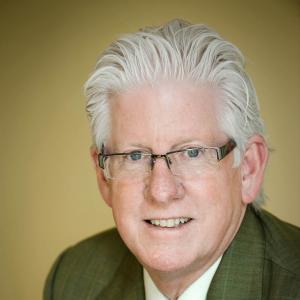 Miami tourism is not just about beaches. Just look at what’s happening with conferences: the current expansion and enhancement of the Miami Beach Convention Center will attract different industries—financial, medical and technological—to Miami for business tourism. In March 2016, Miami voters will be asked to approve a lease agreement for the 800-room headquarter hotel, which will generate revenues for the city without contributing to congestion on the roads as convention-goers will simply walk between the lobbies of the head- quarter hotel and convention center.
Miami tourism is not just about beaches. Just look at what’s happening with conferences: the current expansion and enhancement of the Miami Beach Convention Center will attract different industries—financial, medical and technological—to Miami for business tourism. In March 2016, Miami voters will be asked to approve a lease agreement for the 800-room headquarter hotel, which will generate revenues for the city without contributing to congestion on the roads as convention-goers will simply walk between the lobbies of the head- quarter hotel and convention center.
Meanwhile, our award-winning It’s So Miami campaign continues to educate locals and visitors about Miami’s many multicultural neighborhoods. We’ve opened new visitors’ centers in historical areas, such as Historic Overtown, Little Haiti, Little Havana and the West Grove, and partnered with the Big Bus to route their buses through these neighborhoods. Their business has boomed as a result. Our goal is to have visitors extend their Miami stay to visit our vibrant heritage neighborhoods.
Miami continues to benefit from traditional tourism drivers, such as cruising. In 2015, around 6 percent of our 15 million overnight visitors were here for a cruise. Today, we are working with the cruise lines to develop pre and post-cruise programs. We’re excited about the rollout of Brightline, a passenger rail that will operate between Orlando and Miami. Additionally, the opening up of Cuba will also have a positive impact on our cruise ship economy.
One indicator of the sector’s health is the growth within hospitality development. We continue to see increase in luxury hotels. EAST Miami, a six-star hotel with 350 rooms, opens in Brickell in early 2016, while Atton, the South American hotel chain, recently opened their first U.S. location, also in Brickell. Marriott meanwhile has proposed a 1,800-room hotel in the Miami Worldcenter project, with meeting and conference space in Downtown. As inventory grows, occupancy rates may soften, but will stay strong. So far, we’ve been absorbing the inventory, which means the customers are here.
How Miami-Dade’s rise as an innovation hub dovetails with the modernizing efforts of its pillar cruise industry
Arnold Donald President & CEO – Carnival Corporation
How does Miami factor into Carnival Corporation’s strategy for growth?
 Our top priority is to exceed guest expectations and deliver double-digit return on investor capital, which we are on track to achieve in the next two to three years, while prioritizing safety and environmental standards. Miami plays an important role in furthering our mission, beginning with the port, but also as a home base for a significant portion of our workforce. Meanwhile, PortMiami is an important departure point for many guests, as several of our brands—including our flagship Carnival Cruise Line brand, which is headquartered in Miami—operate from PortMiami. Perhaps no other port in the world handles more cruise ships daily as PortMiami. With its proximity to Cuba, Miami will also play an important role as commercial relations with the country evolve, as more people will be coming through Miami, whether to cruise with us or to take a ferry to the island nation.
Our top priority is to exceed guest expectations and deliver double-digit return on investor capital, which we are on track to achieve in the next two to three years, while prioritizing safety and environmental standards. Miami plays an important role in furthering our mission, beginning with the port, but also as a home base for a significant portion of our workforce. Meanwhile, PortMiami is an important departure point for many guests, as several of our brands—including our flagship Carnival Cruise Line brand, which is headquartered in Miami—operate from PortMiami. Perhaps no other port in the world handles more cruise ships daily as PortMiami. With its proximity to Cuba, Miami will also play an important role as commercial relations with the country evolve, as more people will be coming through Miami, whether to cruise with us or to take a ferry to the island nation.
Miami-Dade stakeholders are working to deepen commercial ties with China. How do these campaigns align with Carnival Corporation’s China plans?
China is the largest outbound tourism market with tremendous growth opportunities. It can become the world’s largest cruise market—as large as the entire cruise industry today. Carnival Corporation, already the market leader in China, is maintaining its large share of this booming market. For example, we entered a joint venture partnership with the China State Shipbuilding Corporation and the China Investment Corporation to create China’s first multi-ship domestic cruise brand.
How might the cruising industry, a pillar of Miami-Dade’s economy, synergize with its budding tech ecosystem?
Innovation is critical to our business; we have constructed an innovation center in Miami that will allow us to develop and test new technologies and generate new jobs locally. Technology plays a crucial role in the ability for cruise lines to know and satisfy their customers. For instance, we regularly engage with our database of 30 million previous guests. We examine what they liked about their cruise and how they spent their time to understand which features of our different ships are working well with our brands. Some of the tech initiatives we have introduced are enhanced WiFi on some of our ships and a social smartphone app. We continue to develop ways for guests to use their phones to, in effect, design their own cruise. Our ultimate goal is to exceed guest expectations by empowering each guest with technology to customize their travel experience.
Invest: Miami speaks to Robert Hill, General Manager
Miami’s hospitality industry continues to be a strong driver for its economy. We see remarkable occupancy rates of 90 percent in this market. At InterContinental Miami, we have seen double-digit growth rates over the past three years. This year the rate has settled back to single-digit levels but continues to be strong. In particular, our growth is driven by corporate meetings, which comprise 65 percent of our business. Within that, we are seeing a higher level of meetings and events choosing Miami as their destination; that is, more managed funds and banking groups that are willing to pay a premium for quality of service.
With respect to food and beverage, we continue to see double-digit growth, both on our banquet side, generated by our core business of meetings and events bookings, as well as our signature restaurant, Toro Toro. An interesting development is that the restaurant numbers reflect an increasingly local consumer base; 60 percent of Toro Toro guests are area residents.
Miami’s distinct flavor is hip, cool and reflective of an international vibe. This flavor is reflected in our aesthetic choices. For instance, moving images and light displays on LED screens on the hotel’s exterior light up the skyline, which works with the energy, mood and the feel of Miami.
While international visitors continue to drive Miami’s tourism industry, we are seeing domestic growth. Latin American economies have slowed this year, resulting in a decline in visitors from the region. Yet our numbers are up because the majority of meetings and events business is coming to us from the U.S. As Miami continues to develop its infrastructure and expand its cultural offerings, the community will continue to attract more guests from new markets. This way, we can offset the shortfall in the down times.
Invest: Miami speaks to Beverly Raphael, President and Co-founder
 When I moved to Florida in 1981, the Miami Design District had just a couple of furniture showrooms. Now, it’s become the SoHo of Miami with high-end shopping destinations like Hublot, Hermes, Louis Vuitton, Prada, Bvlgari and Tom Ford. Watching it develop has been nothing short of spectacular.
When I moved to Florida in 1981, the Miami Design District had just a couple of furniture showrooms. Now, it’s become the SoHo of Miami with high-end shopping destinations like Hublot, Hermes, Louis Vuitton, Prada, Bvlgari and Tom Ford. Watching it develop has been nothing short of spectacular.
More recently, we completed a three-story Harry Winston store in the Design District and are building two restaurants at Brickell City Centre. One measure of this market’s rapid growth can be seen in the fact that competition in the construction sector today is more intense than ever. Developers and general contractors from the U.S. Northeast have seen what’s happening in Miami and want to get a piece of it. They’ve opened satellite offices here, driving prices up. These developers are taking exciting risks and the high-end residential products they are introducing are giving Miami a posh feel, different from anywhere else in Florida. We’ve also seen an evolution in the aesthetic preferences of retailers. For instance, a lot of European designs are moving from an “Old World” look to a much more contemporary and minimalistic look with clean, straight lines.
Retailers and restaurateurs are trying to create designs that aren’t “cookie-cutter,” looking here and abroad for new concepts. We are also seeing big players entering the retail space; in Downtown Miami, Forbes is helping develop the mega mixed use project Miami Worldcenter, bringing together great shopping, entertainment and restaurants. RCC Associates has responded to this market demand for high-quality retail, restaurant and entertainment spaces. Five years ago, we built Zuma, which continues to be one of the top restaurants in Miami.
Looking ahead, we will continue to benefit from the influx of European, Asian and Latin American money, and I’m confident in the opportunity here. Miami has seen recessions over the years, and it always comes back stronger. We haven’t seen the bulk of the growth yet. This is just the beginning.
BISNOW’S MIAMI’S STATE OF THE MARKET 2016
Over 300 people received the Invest: Miami 2016 book at Bisnow’s September conference in Miami.
When: September 27, 2016
BizNow’s 5th Annual Miami State of the Market, brought together Miami’s leaders across asset classes and industries, all whom have their hand in building the NEW Miami!
Invest: Miami speaks to Oscar Feldenkreis, CEO
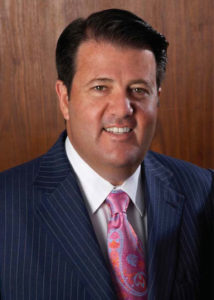 Today’s retail landscape is dramatically evolving and companies need to quickly adapt. Perry Ellis is no exception. For instance, more consumers—including many millennials—shop online, rather than visiting a store. We continue to increase our investments in web-based retailing and direct-to-consumer advertising, one of our fastest-growing businesses.
Today’s retail landscape is dramatically evolving and companies need to quickly adapt. Perry Ellis is no exception. For instance, more consumers—including many millennials—shop online, rather than visiting a store. We continue to increase our investments in web-based retailing and direct-to-consumer advertising, one of our fastest-growing businesses.
Recognizing that reduced spending by foreign tourists, given the strengthening of the U.S. dollar, has impacted retailers, we have weighted our retail strategy toward local consumers. We have also accelerated our calendar to bring our products to market earlier, ensuring they are relevant to consumers’ changing tastes.
As a global firm with roots in this community, we are optimistic about Miami’s future. Our evolution from a family-founded company to a publicly-traded corporation has coincided with Miami-Dade’s evolution into a thriving international city. We are committed to investing in this community, as demonstrated by the recent 40,000-square-foot expansion of our corporate headquarters in Doral.
Our Hispanic heritage, and the fact that our headquarters is based in the predominantly Hispanic Miami-Dade market, gives us an advantage in terms of knowing the preferences and tastes of Hispanic consumers. These insights allow us to educate our retail partners on how best to capture market share in this fast-growing demographic.
A challenge facing Miami pertains to talent cultivation. Perry Ellis has endeavored to address this by bringing on a chief talent officer and by partnering with local universities to train their graduates at our facilities. Plus, our executives teach classes and are guest speakers at local design schools.
While we have offices in New York, Portland and Los Angeles, Miami is our home, and we look forward to fortifying our presence here. Miami shows much cultural potential, as demonstrated by the growth of retail centers such as the Miami Design District, and art institutions like the Perez Art Museum Miami. We believe these developments will drive Miami to become a significant national and international fashion city.
Invest: Miami speaks to Carol Brooks, President and Co-founder
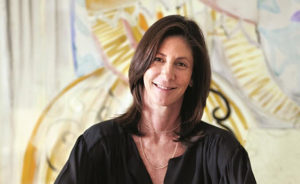 This is an exciting time for Miami’s retail market, as national and international brands are expanding their presence, and new mixed-use developments, mega malls and neighborhood centers will create new investment opportunities. But the Miami-Dade market is still under-retailed based on its urban and suburban population (2.6 million) and the more than 14 million visitors who travel to Miami and spend more than $23 billion annually. In fact, Miami has become one of the world’s premier shopping destinations, particularly for luxury brands.
This is an exciting time for Miami’s retail market, as national and international brands are expanding their presence, and new mixed-use developments, mega malls and neighborhood centers will create new investment opportunities. But the Miami-Dade market is still under-retailed based on its urban and suburban population (2.6 million) and the more than 14 million visitors who travel to Miami and spend more than $23 billion annually. In fact, Miami has become one of the world’s premier shopping destinations, particularly for luxury brands.
The rise of the luxury segment in Miami-Dade’s retail market has resulted in escalating rental rates in high-demand areas like Lincoln Road and Wynwood. While rents were $100 to $150 per square foot five years ago on Lincoln Road, today they are $300 per square foot. More luxury retail space is being developed in the Miami Design District, Brickell City Centre and Mediterranean Village in Coral Gables.
Meanwhile, investors and property owners are transforming existing retail complexes into lifestyle centers infused with local character that satisfy consumers’ craving for unique shopping and dining experiences. Because Miami-Dade is such a diverse region, with varied neighborhoods and communities, there is a wide range of new construction and redevelopment opportunities to cater to this sophisticated retail market. In the grocery segment, there are now multiple options for an anchor tenant. Whole Foods, Fresh Market and other high-quality national chains are looking to expand and other brands have recently entered with plans for growth, such as Trader Joe’s, Earth Fare and Lucky’s Market.
While Miami is steadily becoming a more urban hub, infrastructure and transportation improvements are needed to make this a reality. In the next three to five years, Miami’s growth as a retail destination will be felt from its urban core to its most popular suburbs. Instilling local character into a lifestyle retail center or mall has the power to lure new tenants and draw consumers, and as a result, investors will be able to maximize asset value and help tenants achieve long-term success.
 were up. While we had a setback last year when it came to on-the-field performance, we are back on the hope train for 2016 and looking forward to what it will bring as our plan is to bring another World Series Championship to Miami. Part of the success of the team hinges on having and maintaining an effective presence on social media. This is why we have an entire department devoted to marketing initiatives and the digital promotion of our team and baseball as a sport. The goal is very simple: to go viral. This is a challenge as it means having to make ourselves different from others in the digital marketplace, where our users’ desire for information about the Marlins can be fulfilled in myriad ways.
were up. While we had a setback last year when it came to on-the-field performance, we are back on the hope train for 2016 and looking forward to what it will bring as our plan is to bring another World Series Championship to Miami. Part of the success of the team hinges on having and maintaining an effective presence on social media. This is why we have an entire department devoted to marketing initiatives and the digital promotion of our team and baseball as a sport. The goal is very simple: to go viral. This is a challenge as it means having to make ourselves different from others in the digital marketplace, where our users’ desire for information about the Marlins can be fulfilled in myriad ways.
 At the start of the 2014-2015 season, we had a bit of uncertainty coming off of LeBron James going back to Cleveland. Later we encountered injuries and other setbacks, resulting in a rather disappointing season; last year was only the fourth time in 20 years that we did not make the playoffs. These experiences put us into soul-searching mode.
At the start of the 2014-2015 season, we had a bit of uncertainty coming off of LeBron James going back to Cleveland. Later we encountered injuries and other setbacks, resulting in a rather disappointing season; last year was only the fourth time in 20 years that we did not make the playoffs. These experiences put us into soul-searching mode. Miami tourism is not just about beaches. Just look at what’s happening with conferences: the current expansion and enhancement of the Miami Beach Convention Center will attract different industries—financial, medical and technological—to Miami for business tourism. In March 2016, Miami voters will be asked to approve a lease agreement for the 800-room headquarter hotel, which will generate revenues for the city without contributing to congestion on the roads as convention-goers will simply walk between the lobbies of the head- quarter hotel and convention center.
Miami tourism is not just about beaches. Just look at what’s happening with conferences: the current expansion and enhancement of the Miami Beach Convention Center will attract different industries—financial, medical and technological—to Miami for business tourism. In March 2016, Miami voters will be asked to approve a lease agreement for the 800-room headquarter hotel, which will generate revenues for the city without contributing to congestion on the roads as convention-goers will simply walk between the lobbies of the head- quarter hotel and convention center. Our top priority is to exceed guest expectations and deliver double-digit return on investor capital, which we are on track to achieve in the next two to three years, while prioritizing safety and environmental standards. Miami plays an important role in furthering our mission, beginning with the port, but also as a home base for a significant portion of our workforce. Meanwhile, PortMiami is an important departure point for many guests, as several of our brands—including our flagship Carnival Cruise Line brand, which is headquartered in Miami—operate from PortMiami. Perhaps no other port in the world handles more cruise ships daily as PortMiami. With its proximity to Cuba, Miami will also play an important role as commercial relations with the country evolve, as more people will be coming through Miami, whether to cruise with us or to take a ferry to the island nation.
Our top priority is to exceed guest expectations and deliver double-digit return on investor capital, which we are on track to achieve in the next two to three years, while prioritizing safety and environmental standards. Miami plays an important role in furthering our mission, beginning with the port, but also as a home base for a significant portion of our workforce. Meanwhile, PortMiami is an important departure point for many guests, as several of our brands—including our flagship Carnival Cruise Line brand, which is headquartered in Miami—operate from PortMiami. Perhaps no other port in the world handles more cruise ships daily as PortMiami. With its proximity to Cuba, Miami will also play an important role as commercial relations with the country evolve, as more people will be coming through Miami, whether to cruise with us or to take a ferry to the island nation. When I moved to Florida in 1981, the Miami Design District had just a couple of furniture showrooms. Now, it’s become the SoHo of Miami with high-end shopping destinations like Hublot, Hermes, Louis Vuitton, Prada, Bvlgari and Tom Ford. Watching it develop has been nothing short of spectacular.
When I moved to Florida in 1981, the Miami Design District had just a couple of furniture showrooms. Now, it’s become the SoHo of Miami with high-end shopping destinations like Hublot, Hermes, Louis Vuitton, Prada, Bvlgari and Tom Ford. Watching it develop has been nothing short of spectacular.

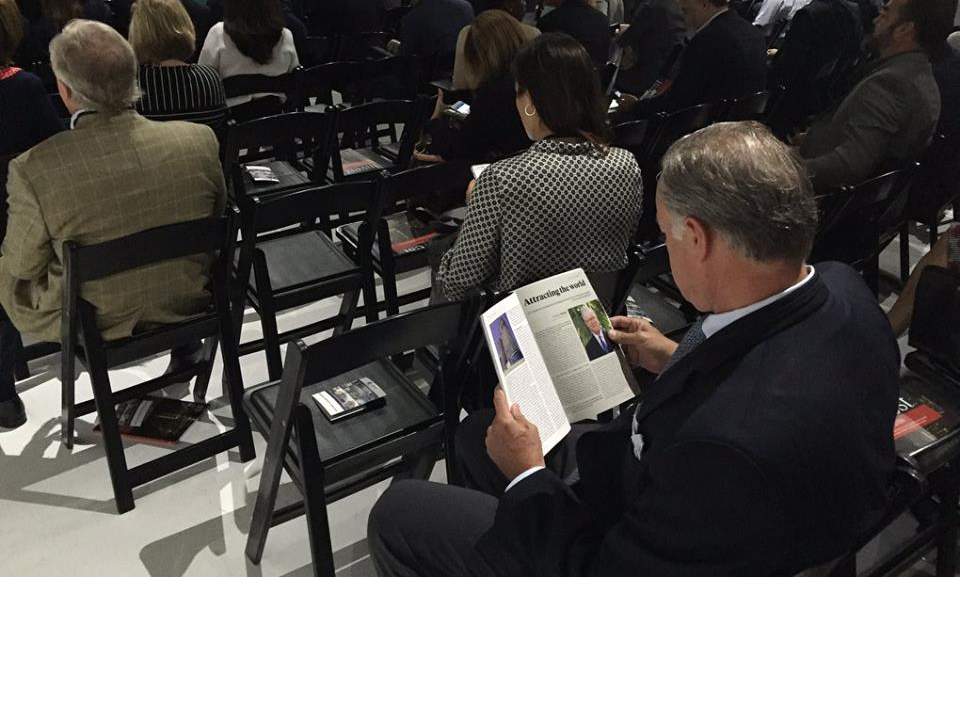



 Today’s retail landscape is dramatically evolving and companies need to quickly adapt. Perry Ellis is no exception. For instance, more consumers—including many millennials—shop online, rather than visiting a store. We continue to increase our investments in web-based retailing and direct-to-consumer advertising, one of our fastest-growing businesses.
Today’s retail landscape is dramatically evolving and companies need to quickly adapt. Perry Ellis is no exception. For instance, more consumers—including many millennials—shop online, rather than visiting a store. We continue to increase our investments in web-based retailing and direct-to-consumer advertising, one of our fastest-growing businesses. This is an exciting time for Miami’s retail market, as national and international brands are expanding their presence, and new mixed-use developments, mega malls and neighborhood centers will create new investment opportunities. But the Miami-Dade market is still under-retailed based on its urban and suburban population (2.6 million) and the more than 14 million visitors who travel to Miami and spend more than $23 billion annually. In fact, Miami has become one of the world’s premier shopping destinations, particularly for luxury brands.
This is an exciting time for Miami’s retail market, as national and international brands are expanding their presence, and new mixed-use developments, mega malls and neighborhood centers will create new investment opportunities. But the Miami-Dade market is still under-retailed based on its urban and suburban population (2.6 million) and the more than 14 million visitors who travel to Miami and spend more than $23 billion annually. In fact, Miami has become one of the world’s premier shopping destinations, particularly for luxury brands.